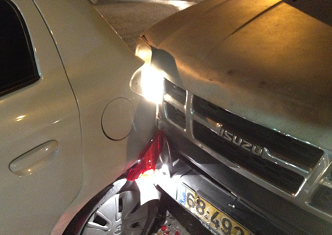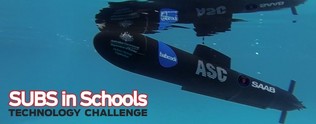
Last week, Karen and I had our day in court as a result of Karen being rear-ended in an accident last year. There were no witnesses to prove that she hadn’t hit the van in front of her before being hit from behind. The insurance company of the owner of the truck which hit her would not pay for the damage to the front of her car. According to the insurance company representative it was an “open and shut case”.
Except, that it wasn’t open and shut, because there was no accident until she was hit from behind and we wanted justice. We waited over a year for our day in court, even though we thought our chances of winning anything were slim.
Without witnesses, I suggested to Karen that this was really a physics problem. We had to demonstrate that she was hit hard enough to be pushed a few meters into the van in front of her. She enlisted three physics students from the boys’ high school, where she teaches, to work on the problem. We gave them the vehicles’ weights and speed. They made utilized formulas that they had been studying for four years, filling up three white boards with the all of their calculations.
After they were finished we both agreed that we could not interpret their results without them going to court with us. With special permission from the school, we had three 12th grade physics students come to small claims court with us. One of the boys spoke. He explained the calculations they had made which showed that the truck had pushed Karen’s car approximately 3.8 meters on impact. His testimony was confident and mature causing the insurance representative to want to settle with us.
We were all changed by this experience, especially the boys. They came away with the idea that justice was done in this Jerusalem court and that their hard work and study had practical applications. We too were moved by their diligent work and brilliant testimony before the judge. Of course, with WhatsApp, the entire school knew of their victory in court and what they had done for their teacher.
What does this have to do with amateur radio, you might ask? As hams we have a lot of practical knowledge that has far reaching implications. We take our theoretical knowledge and apply it on a daily basis and I owe my amateur radio background to looking at this as a problem to be solved. These physics students had the opportunity to take their knowledge from the white board to the court room to help solve a real life problem. As hams, we can influence others to dig deeper, to try new things. While we express ourselves through electronics and radio, our approach to problem solving is very practical and far beyond just our hobby.
73, Eric 4Z1UG




 RSS Feed
RSS Feed